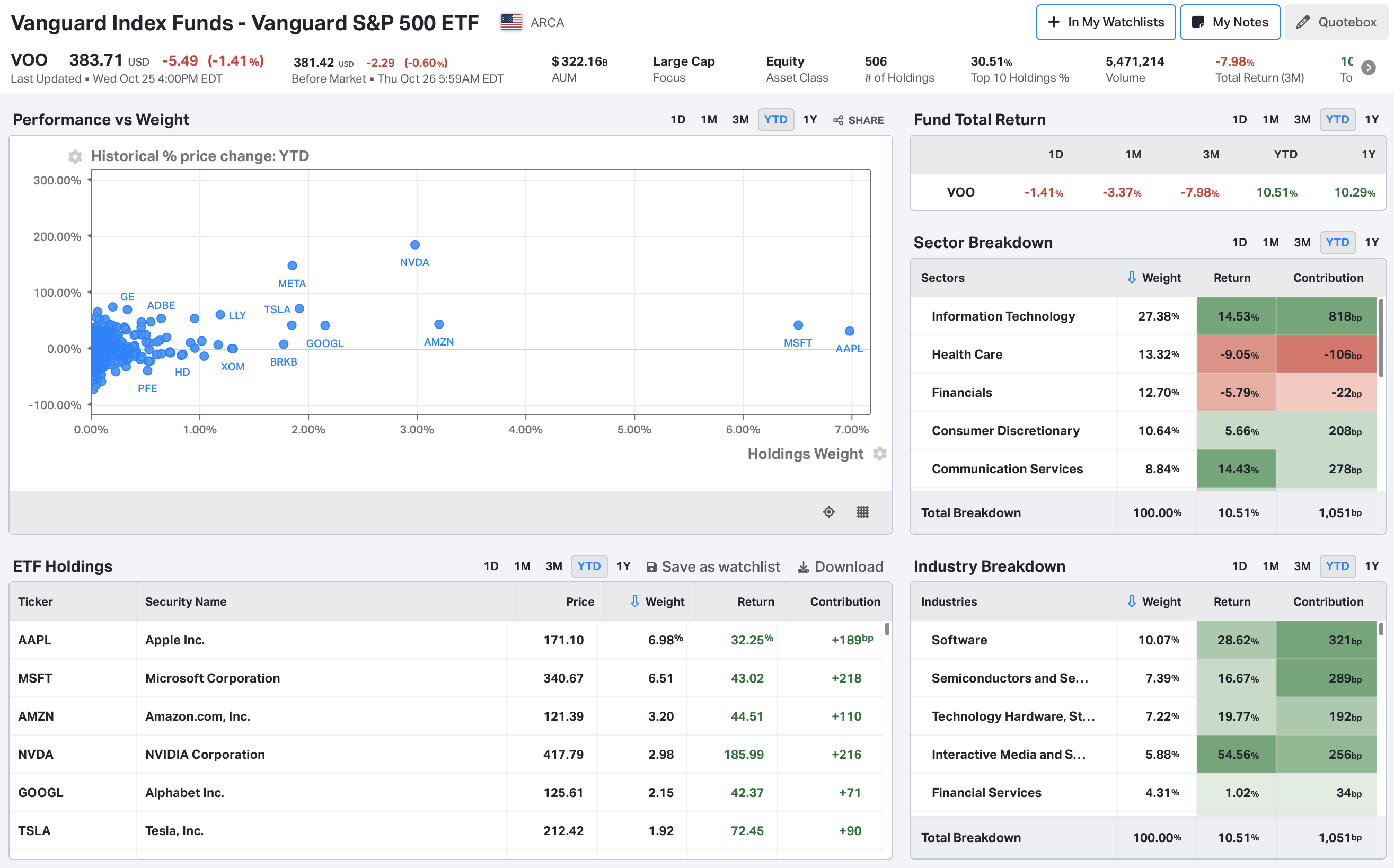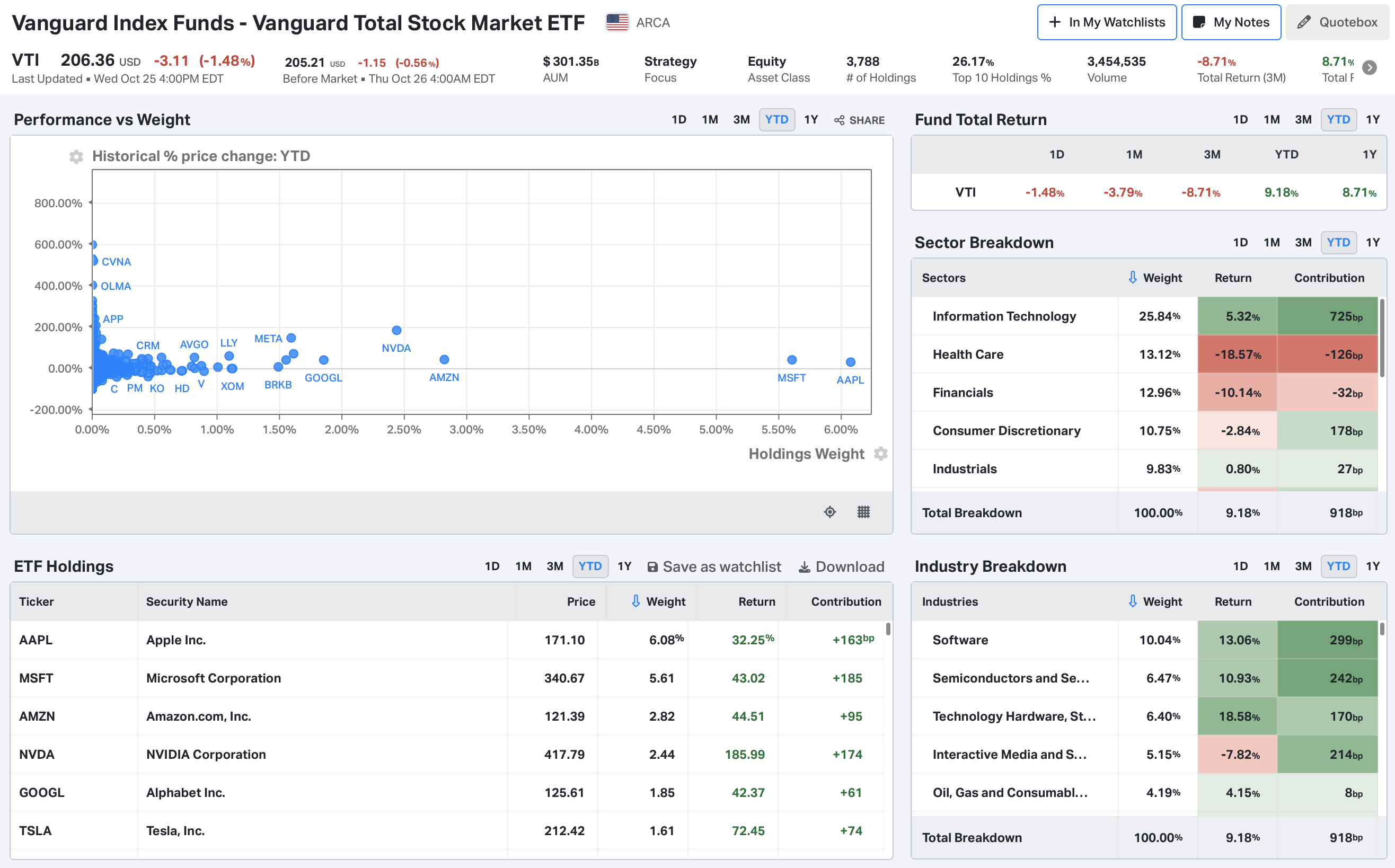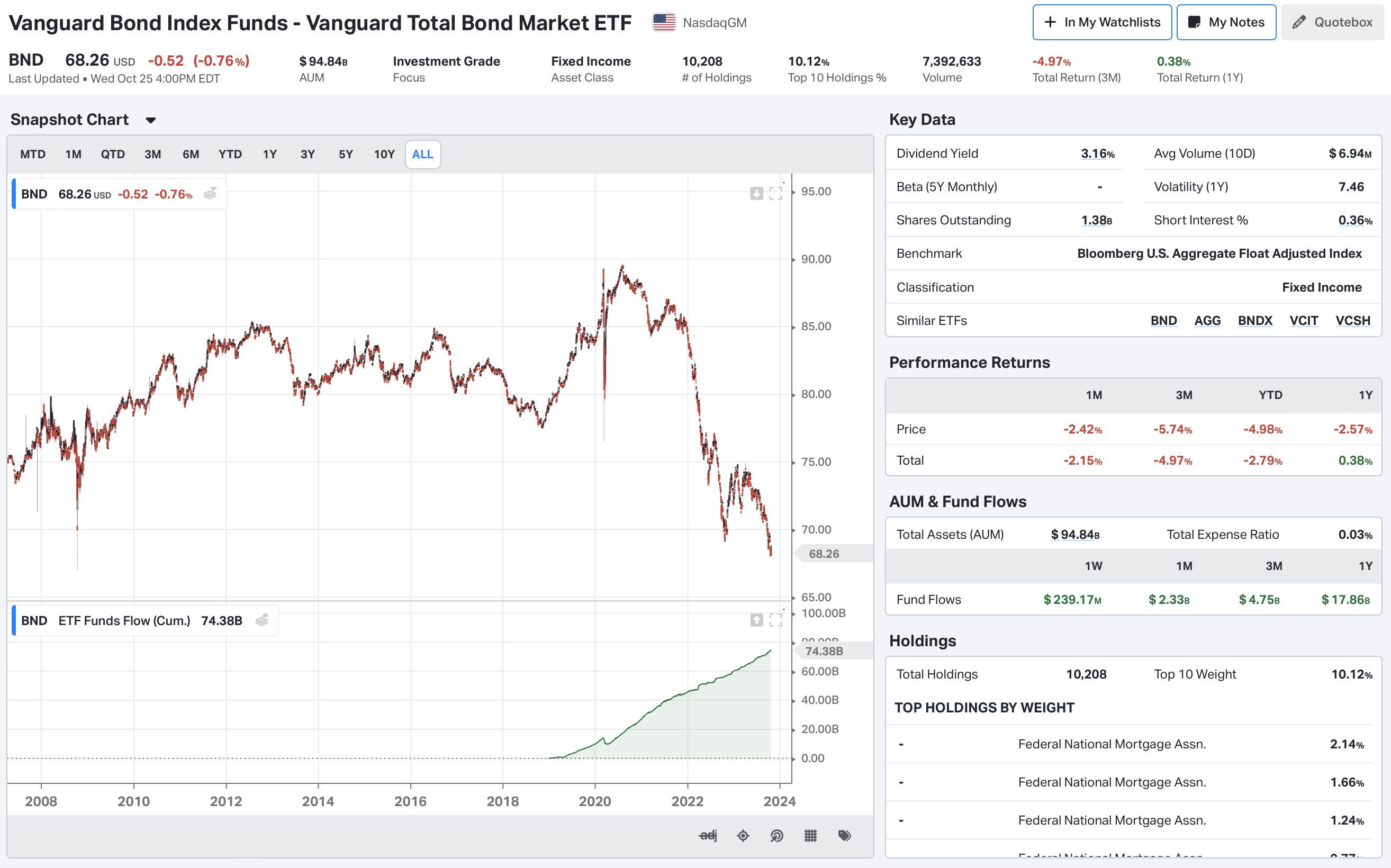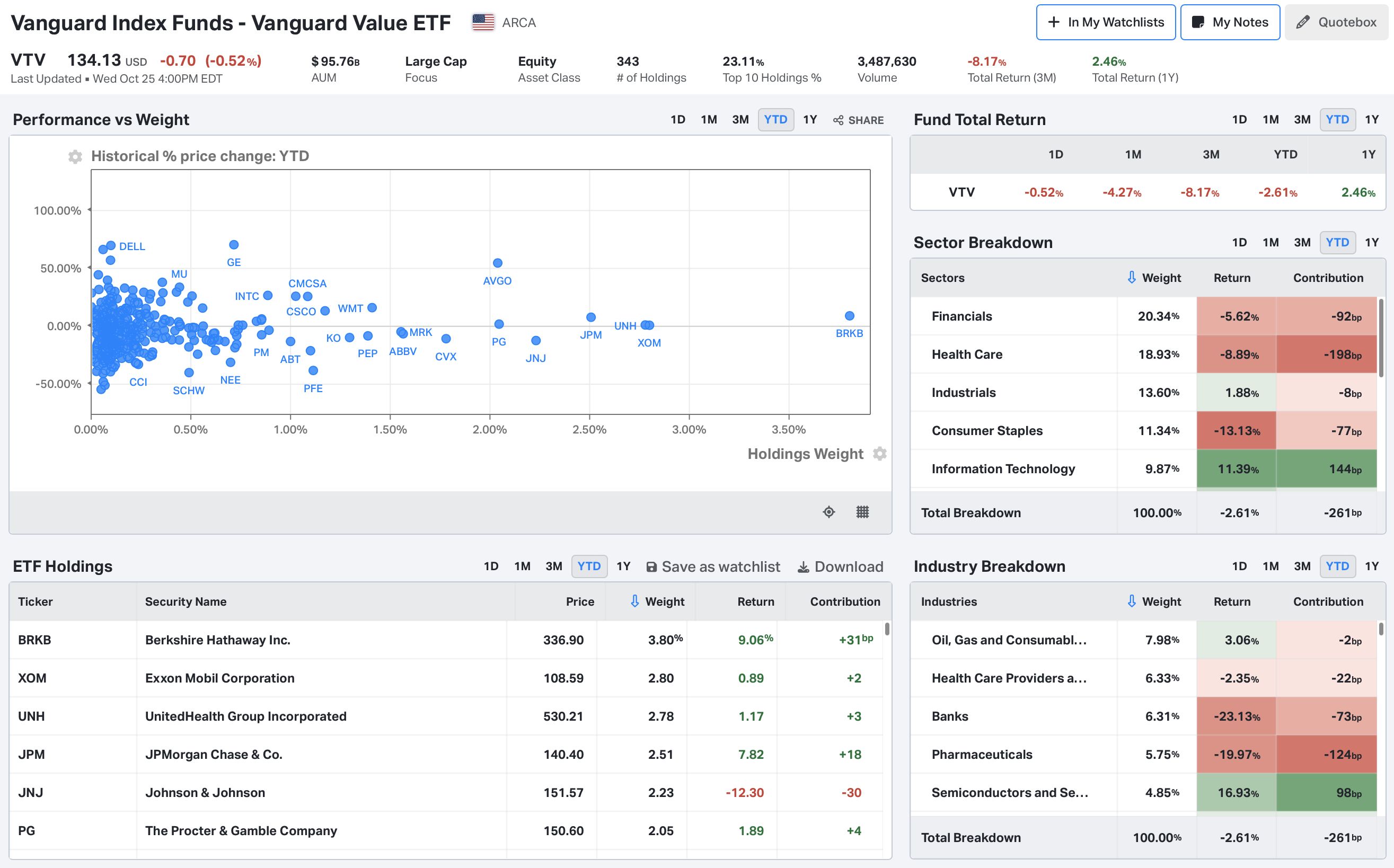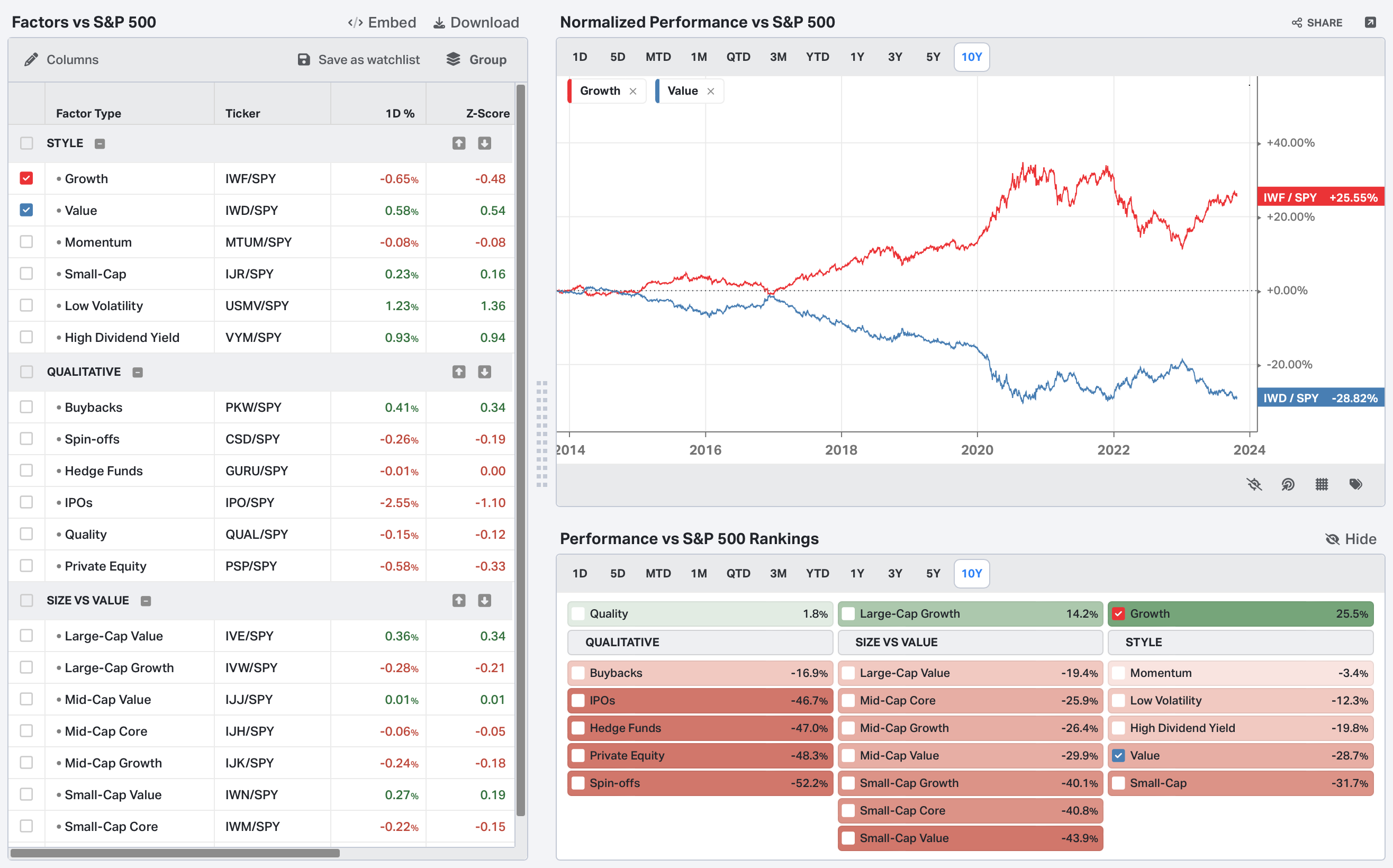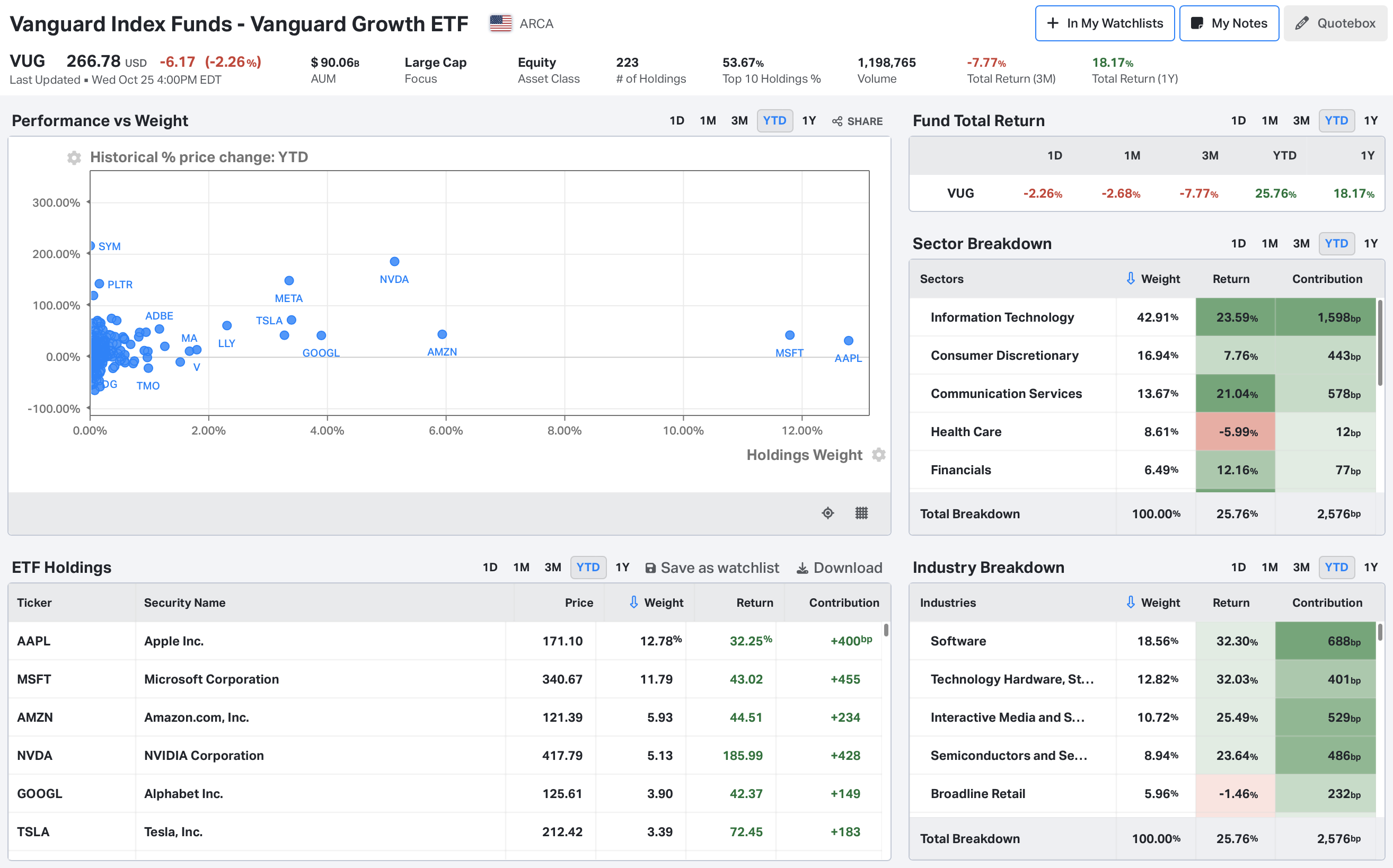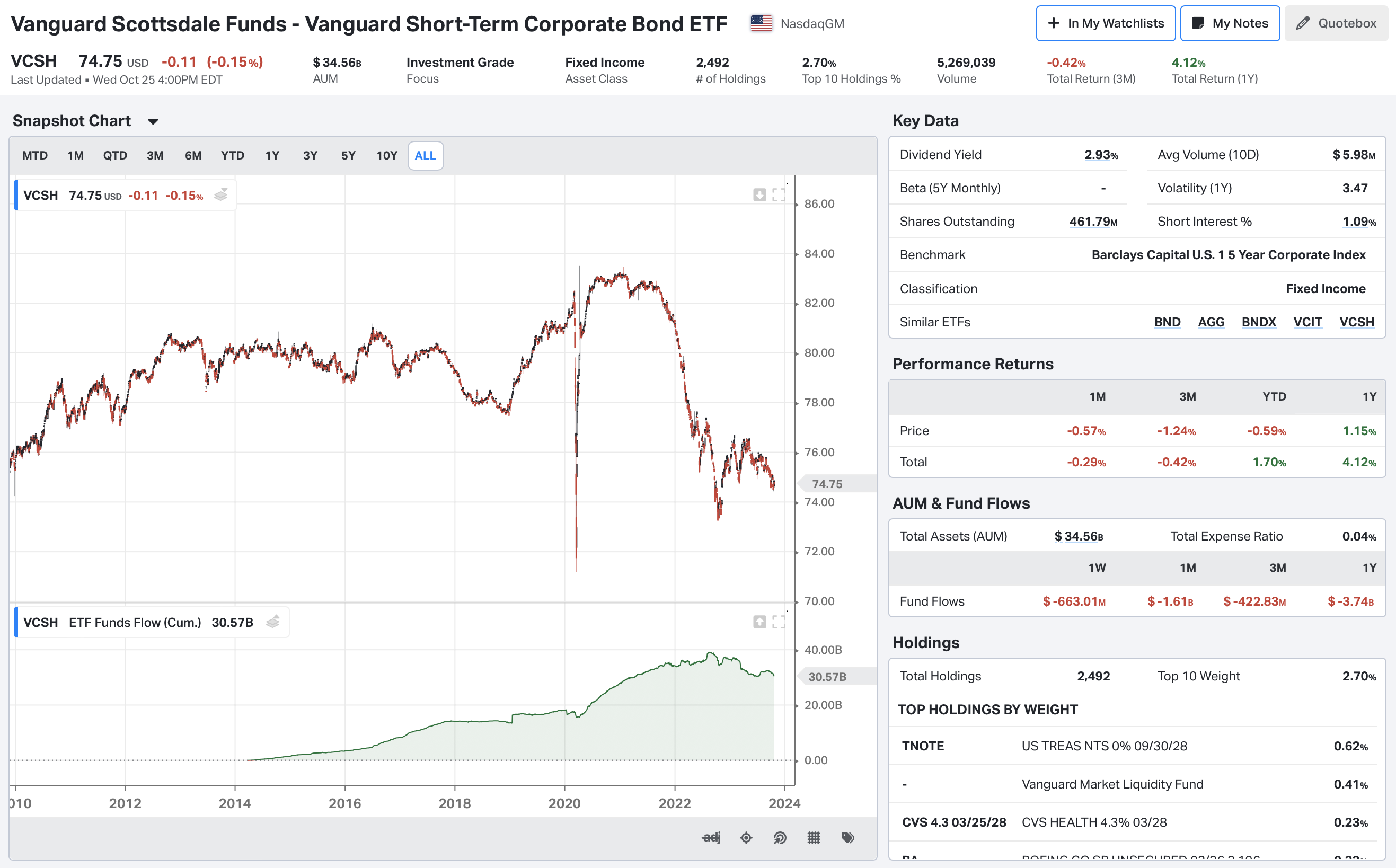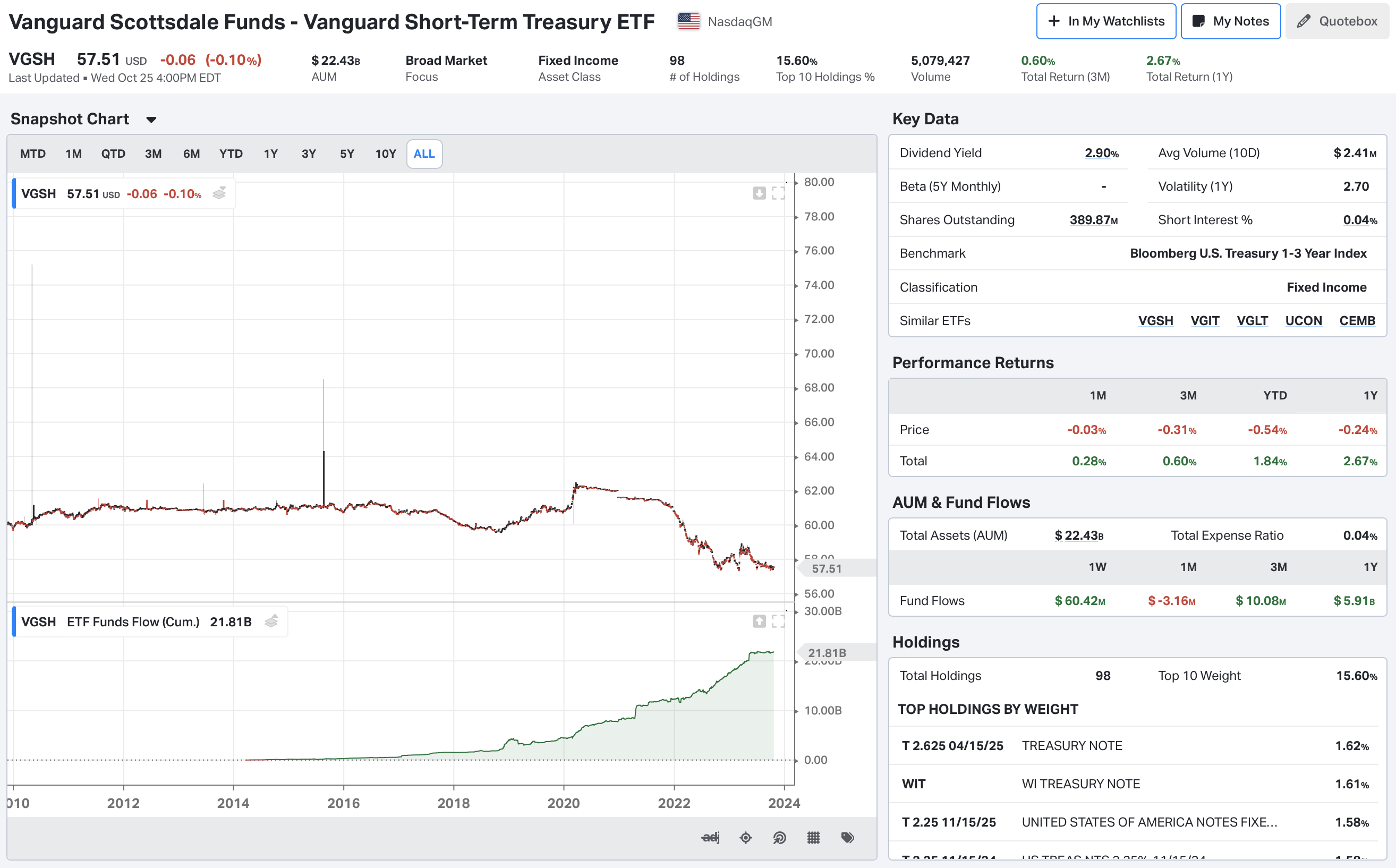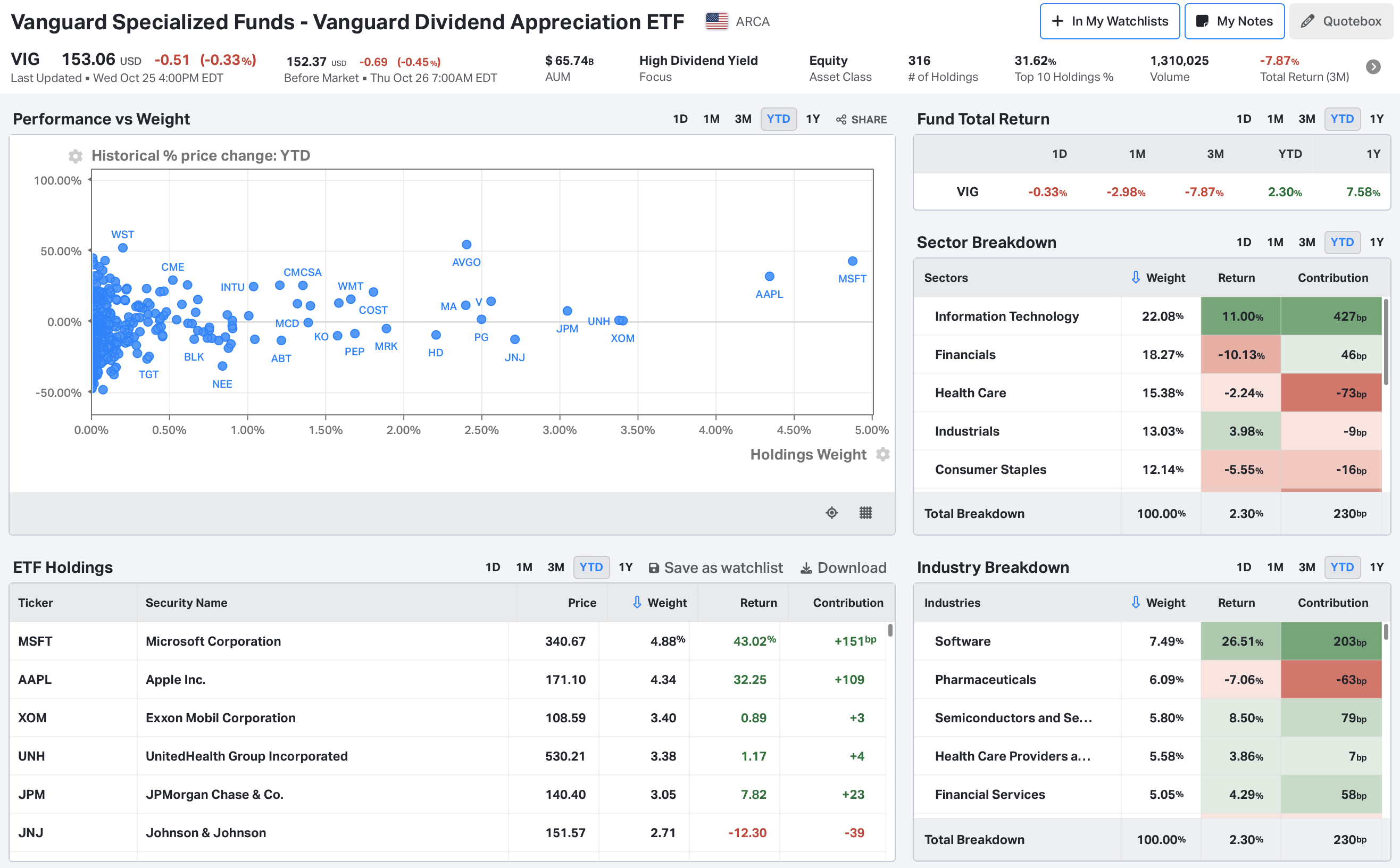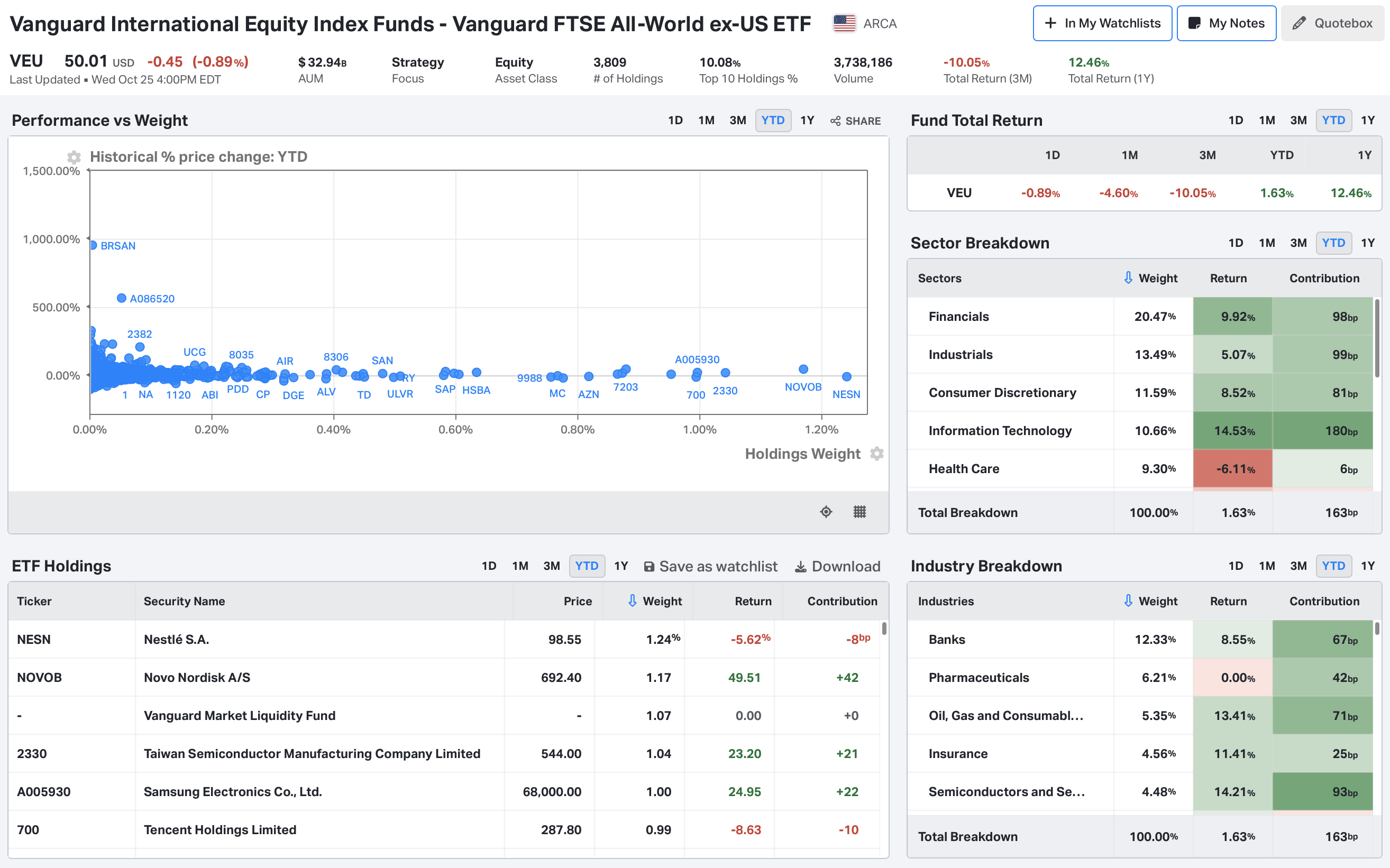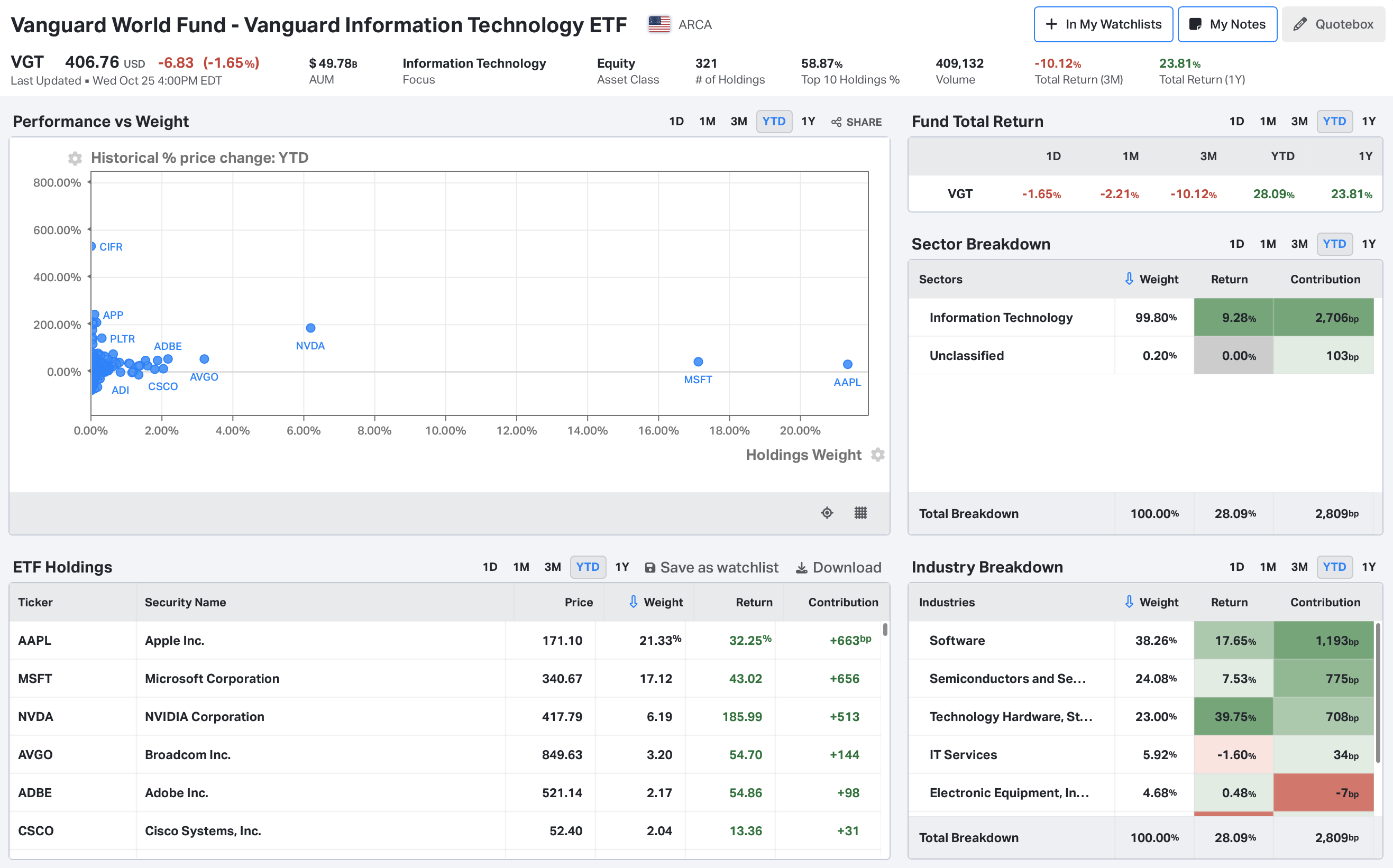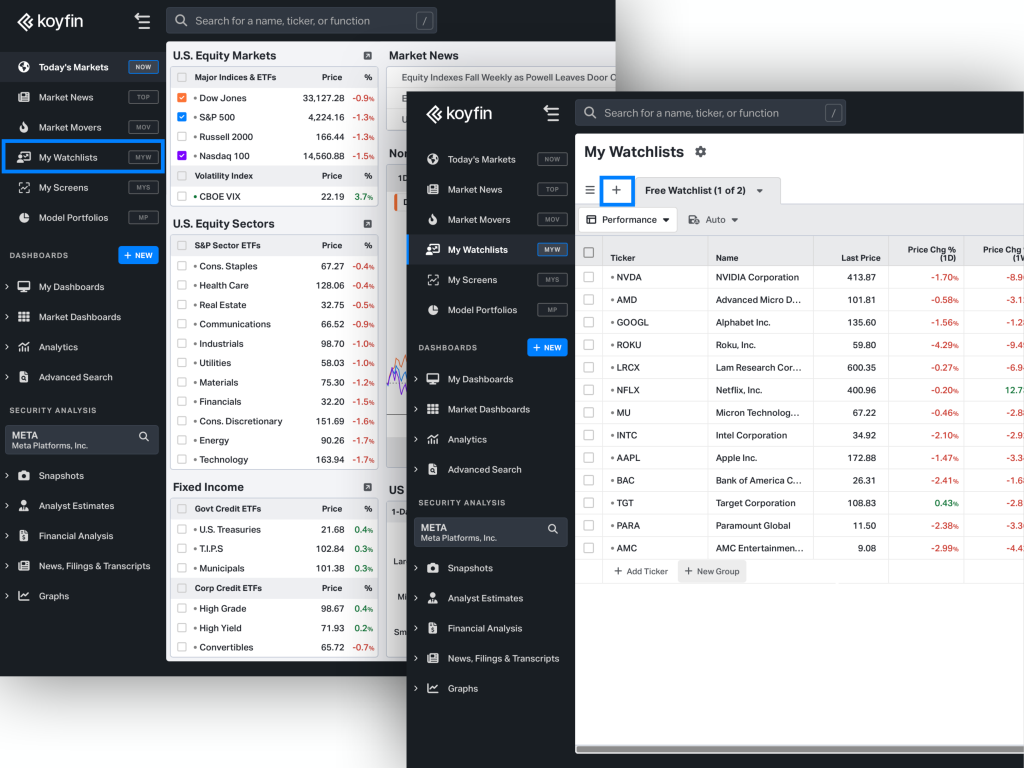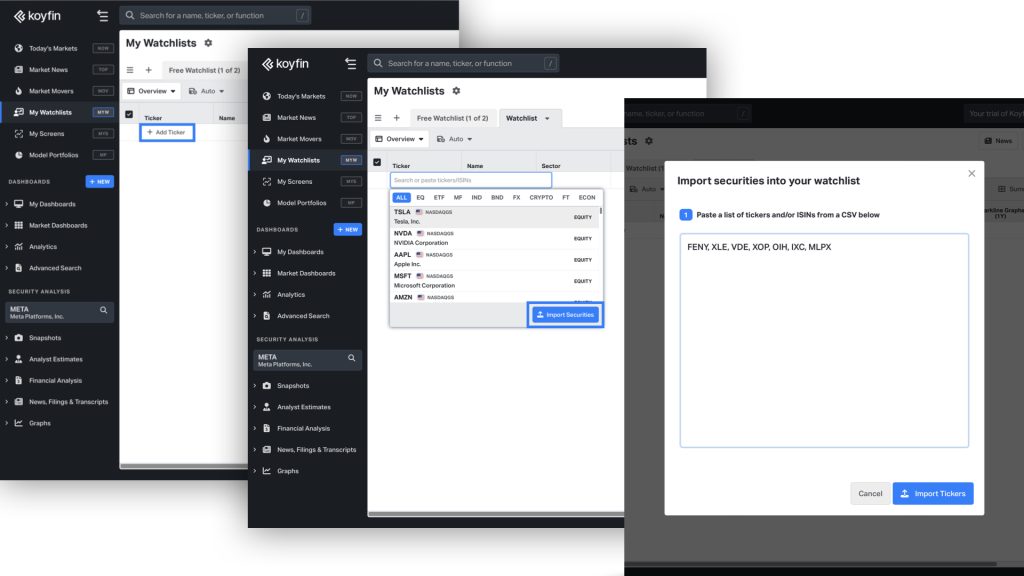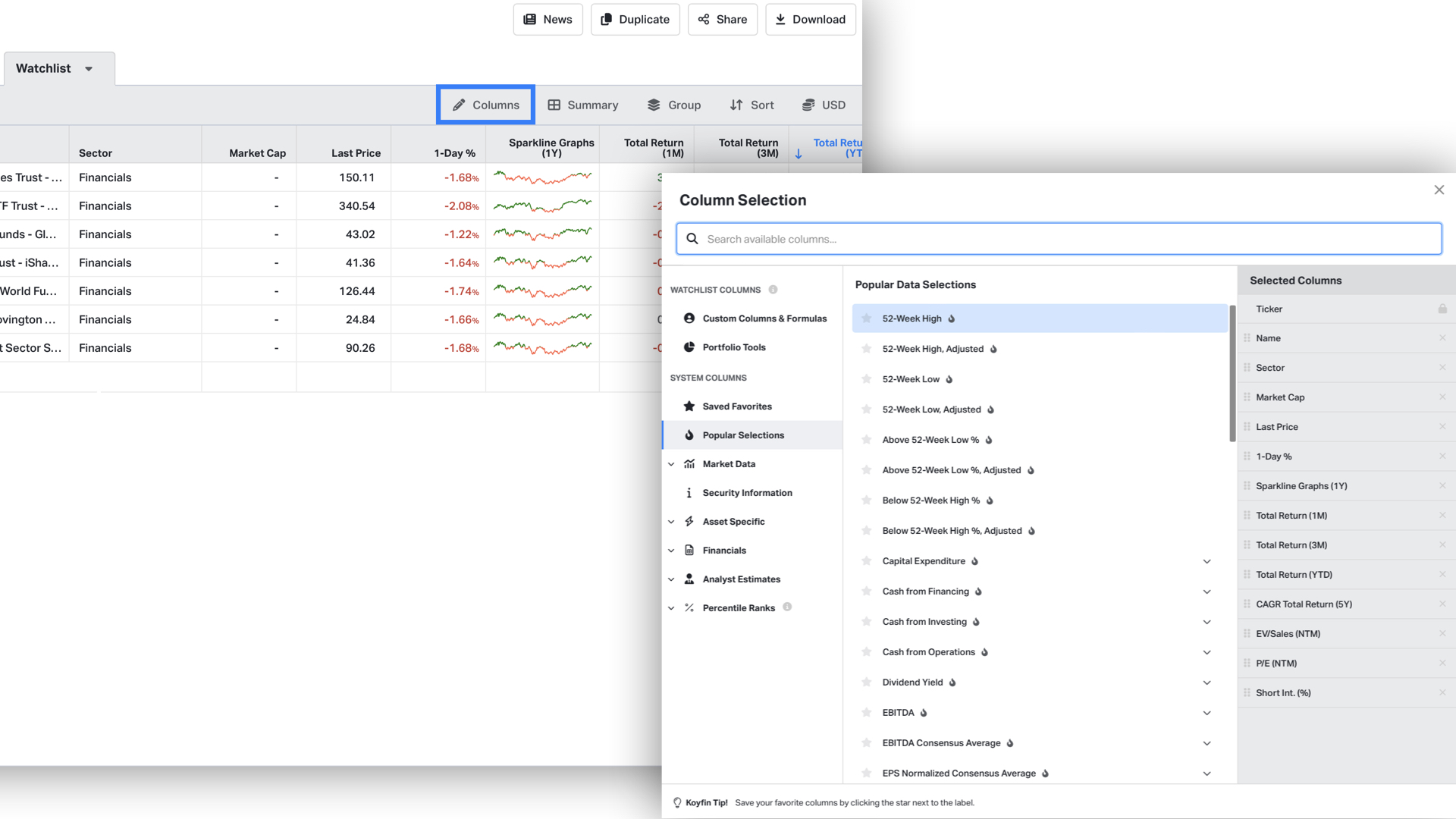10 Best Vanguard ETFs of 2023
Once upon a time, the mutual fund was an investor’s only hope of gaining access to a variety of companies within a single investment vehicle. In 1993, the world’s first equity-focused exchange-traded fund, the SPDR S&P 500 fund (SPY), was created. Much like Helen of Troy, said to be the “face that launched a thousand ships” due to her ability to drive men to war, the SPY was the fund that launched a thousand funds. Several decades earlier, the founder of Vanguard, John Bogle, launched the first index fund in 1976. It would take until 2001 before Vanguard, the pioneers of index investing, entered the ETF market. But when they did, they did so in glorious fashion. Today, Vanguard is among the top 3 ETF issuers globally and is known for its extensive library of low-cost index funds.
Today, we want to highlight ten of the best Vanguard ETFs, covering both equities and bonds.
Identifying the Best Vanguard ETFs: Our Strategy
To curate the list of the best Vanguard ETFs, we used the Koyfin ETF screening tool to search for ETFs with the following criteria:
- US-based: We opted to choose US ETFs for this list.
- Vanguard: Naturally, all of these ETFs are advised by Vanguard.
- Non-levered: We exclude all leveraged ETFs.
- Passive: We exclude active funds from our selection.
- Large AUM: All of our selections have a base of AUM that exceeds $20 billion.
- Low Expense: All of our selections have expense ratios below 1.0%.
- Widely Available: There are many funds out there offering exposure to the energy market. We focused on funds that are widely available and are not restricted to certain brokerages, advisors, or pension schemes.
Discover how to find Vanguard ETFs on your own using a screener at the end of the article!
The 10 Best Vanguard ETFs of 2023
Name | Ticker | Holdings | Dividend Yield | Expense Ratio |
|---|---|---|---|---|
Vanguard S&P 500 ETF | VOO | 506 | 1.55% | 0.03% |
Vanguard Total Stock Market ETF | VTI | 3,788 | 1.54% | 0.03% |
Vanguard Total Bond Market ETF | BND | 10,208 | 3.16% | 0.03% |
Vanguard Value ETF | VTV | 343 | 2.74% | 0.04% |
Vanguard Growth ETF | VUG | 223 | 0.62% | 0.04% |
Vanguard Short-Term Corporate Bond ETF | VCSH | 2,492 | 2.93% | 0.04% |
Vanguard Short-Term Treasury ETF | VGSH | 98 | 2.90% | 0.04% |
Vanguard Dividend Appreciation ETF | VIG | 316 | 2.07% | 0.06% |
Vanguard FTSE All-World ex-US ETF | VEU | 3,809 | 3.28% | 0.07% |
Vanguard Information Technology ETF | VGT | 321 | 0.79% | 0.10% |
*Data as of October 26th, 2023
Ready to monitor these funds closely? Keep scrolling to the end of the article to uncover simple tips for creating your own watchlist!
Vanguard S&P 500 ETF (VOO)
Vanguard’s VOO is an ETF that tracks the S&P 500 Index and is one of the world’s largest funds, with $322 billion in AUM. With VOO, you will gain exposure to the 506 companies within the S&P 500, receive a dividend yield of 1.55% and benefit from owning the literal benchmark that most of the world’s funds and managers compare their performance to. Often, when investors say that it’s tough to beat the market, they are referring to the S&P 500, which over the last 40 years has returned an annualized 8.7% each year. Investors can own this ETF for an incredibly low expense ratio of 0.03%, granting them access to the largest companies in the United States.
The majority of the fund’s sectoral exposure is held in Information Technology (27%), Healthcare (13%), Financials (13%), Consumer Discretionary (11%), and Communication Services (9%). VOO’s largest holdings include Apple (7%), Microsoft (7%), Amazon (3%), Nvidia (3%), and Alphabet (2%).
Key Investment Insights for Vanguard S&P 500 ETF (VOO):
Benchmark:
S&P 500 Index
AUM:
$322.2 billion
Number of Holdings:
506
Dividend Yield:
1.55%
Expense Ratio:
0.03%
Top 10 Weight:
30.51%
Vanguard Total Stock Market ETF (VTI)
VTI is Vanguard’s Total Stock Market ETF and invests in equities across the United States. Unlike VOO, which tracks the S&P 500, VTI tracks the entirety of the US market, using the CRSP US Total Market Index. As such, there are 3,788 stocks within VTI, a fund with $301 billion in AUM. The fund has a similar dividend yield of 1.54% and an equally low expense ratio of 0.03%.
VTI’s sectoral exposure is largely comprised of Information Technology (26%), Healthcare (13%), Financials (13%), Consumer Discretionary (11%), and Industrials (10%). The fund’s largest positions are similar to VOO and include Apple (6%), Microsoft (6%), Amazon (3%), Nvidia (2%), and Alphabet (2%). VTI is a suitable fund for investors who want an equally low-cost entrance to the US market but with greater breadth in exposure.
Key Investment Insights for Vanguard Total Stock Market ETF (VTI):
Benchmark:
CRSP US Total Market Index
AUM:
$301.4 billion
Number of Holdings:
3,788
Dividend Yield:
1.54%
Expense Ratio:
0.03%
Top 10 Weight:
26.17%
Vanguard Total Bond Market ETF (BND)
BND is Vanguard’s Total Bond Market ETF, focused on investing in a wide array of fixed-income instruments with medium-term maturities. More than 70% of the securities have maturities between 1 and 10 years. The fund seeks to replicate the performance of the Bloomberg US Aggregate Float-Adjusted Index, investing in US Treasuries, investment-grade corporate bonds, international USD-denominated bonds, and mortgage-backed and asset-backed securities with maturities of more than 1 year.
BND comes with an expense ratio of 0.03%, a dividend yield of 3.16%, and has more than $94 billion in AUM.
Key Investment Insights for Vanguard Total Bond Market ETF (BND):
Benchmark:
Bloomberg U.S. Aggregate Float Adjusted Index
AUM:
$94.9 billion
Number of Holdings:
10,208
Dividend Yield:
3.16%
Expense Ratio:
0.03%
Top 10 Weight:
10.12%
Vanguard Value ETF (VTV)
VTV is the Vanguard Value ETF, investing in equities across the United States, specifically large-cap value stocks, using the CRSP US Large Cap Value Index as its benchmark. The fund currently houses 343 stocks and has $95.8 billion in AUM. The fund has an expense ratio of 0.04% and a dividend yield of 2.74%.
VTV’s sectoral exposure is largely comprised of Financials (20%), Healthcare (19%), Industrials (14%), Consumer Staples (11%), and Information Technology (10%). The fund’s largest positions include Warren Buffett’s Berkshire Hathaway (4%), Exxon Mobil (3%), UnitedHealth (3%), JP Morgan (3%), and Johnson & Johnson (2%).
Key Investment Insights for Vanguard Value ETF (VTV):
Benchmark:
CRSP US Large Cap Value Index
AUM:
$95.8 billion
Number of Holdings:
343
Dividend Yield:
2.74%
Expense Ratio:
0.04%
Top 10 Weight:
23.11%
Vanguard Growth ETF (VUG)
VUG is Vanguard’s Growth ETF, and invests in equities across the United States, specifically large-cap growth stocks, with the CRSP US Large Cap Growth Index as its benchmark. The fund currently houses 223 stocks and has $90 billion in AUM. It boasts an expense ratio of 0.04% and a dividend yield of 0.62%. Unlike VTG, which is comprised of mature companies that pay dividends, VUG has a higher share of younger technology companies that have yet to start paying dividends, hence the smaller yield.
VUG’s sectoral exposure is largely comprised of Information Technology (27%), Consumer Discretionary (17%), Communication Services (14%), Healthcare (9%), and Financials (6%). The fund’s largest positions include Apple (13%), Microsoft (12%), Amazon (6%), Nvidia (5%), and Alphabet (4%).
Both VTG and VUG allow investors to gain low-cost exposure to two of the most prominent factors in the stock market: value and growth. While growth has outperformed value for the last decade, there are periods throughout history when each factor outperforms for various periods.
Key Investment Insights for Vanguard Growth ETF (VUG):
Benchmark:
CRSP US Large Cap Growth Index
AUM:
$90.1 billion
Number of Holdings:
223
Dividend Yield:
0.62%
Expense Ratio:
0.04%
Top 10 Weight:
53.67%
Vanguard Short-Term Corporate Bond ETF (VCSH)
VCSH is Vanguard’s Short Term Corporate Bond ETF, focused on investing in an array of fixed-income instruments with short-term maturities across the global corporate sector; primarily those denominated in US Dollars, with investment-grade credit ratings, fixed rates, and maturities ranging from one to five years. The fund seeks to replicate the performance of the Barclays Capital U.S. 1-5 Year Corporate Index.
VCSH has an expense ratio of 0.04%, a dividend yield of 2.93%, and holds more than $34 billion in AUM. Compared to BND, VCSH has a more niche selection of bonds in their portfolio.
Key Investment Insights for Vanguard Short-Term Corporate Bond ETF (VCSH):
Benchmark:
Barclays Capital U.S. 1-5 Year Corporate Index
AUM:
$34.6 billion
Number of Holdings:
2,492
Dividend Yield:
2.93%
Expense Ratio:
0.04%
Top 10 Weight:
2.7%
Vanguard Short-Term Treasury ETF (VGSH)
VGSH is another Vanguard Bond ETF focused on short-term maturity fixed-income securities. However, VGSH focuses on treasuries, specifically US government bonds. The fund invests in bonds issued by the United States Government with maturities ranging from one to three years and seeks to track the performance of the Bloomberg U.S. Treasury 1-3 Year Index.
VGSH has an expense ratio of 0.04%, a dividend yield of 2.9% and boasts more than $22 billion in AUM. Presently, this ETF offers a superior yield compared to VCSH while providing investors with a higher credit-quality portfolio of bonds.
Key Investment Insights for Vanguard Short-Term Treasury ETF (VGSH):
Benchmark:
Bloomberg U.S. Treasury 1-3 Year Index
AUM:
$22.4 billion
Number of Holdings:
98
Dividend Yield:
2.9%
Expense Ratio:
0.04%
Top 10 Weight:
15.6%
Vanguard Dividend Appreciation ETF (VIG)
Dividend investors may be drawn to VIG, Vanguard’s Dividend Appreciation Index ETF. The fund invests in stocks across the United States that pay dividends and are focused on increasing their dividends over time, by tracking the S&P U.S. Dividend Growers Index. At present, the fund holds 316 stocks and has an AUM exceeding $65.7 billion. VIG’s dividend yield is 2.07% with an expense ratio of 0.06%.
The fund’s sectoral exposure is largely comprised of Information Technology (22%), Financials (18%), Healthcare (15%), Industrials (13%), and Consumer Staples (12%). The fund’s largest positions include Microsoft (5%), Apple (4%), Exxon Mobil (3%), UnitedHealth (3%), and JP Morgan (3%).
It’s worth noting that VIG is not a high-yield ETF. Instead, it focused on dividend growth. For insights into dividend growth stocks and the best dividend ETFs, you might be interested in exploring our other dividend articles.
Key Investment Insights for Vanguard Dividend Appreciation ETF (VIG):
Benchmark:
S&P U.S. Dividend Growers Index
AUM:
$65.7 billion
Number of Holdings:
316
Dividend Yield:
2.07%
Expense Ratio:
0.06%
Top 10 Weight:
31.62%
Vanguard FTSE All-World ex-US ETF (VEU)
Investors looking for international exposure might be interested in VEU, Vanguard’s All-World Ex-US ETF. As the name suggests, VEU invests in equities across the globe, excluding the United States, by tracking the FTSE All-World ex US Index. At present, the fund holds more than 3,800 stocks and has more than $32 billion in AUM. This Vanguard ETF currently has the highest dividend yield (3.28%) on our list and comes with an expense ratio of 0.07%.
VEU’s sectoral exposure is largely comprised of Financials (20%), Industrials (13%), Consumer Discretionary (12%), Information Technology (11%), and Healthcare (9%). The fund’s largest positions include Nestle SA (1%), Novo Nordisk (1%), Taiwan Semiconductor (1%), Samsung (1%), and Tencent Holdings (1%). VEU is a suitable fund for investors who want low-cost exposure to the global market in a way that complements their US exposure.
Key Investment Insights for Vanguard FTSE All-World ex-US ETF (VEU):
Benchmark:
FTSE All-World ex US Index
AUM:
$32.9 billion
Number of Holdings:
3,809
Dividend Yield:
3.28%
Expense Ratio:
0.07%
Top 10 Weight:
10.08%
Vanguard Information Technology ETF (VGT)
And last, VGT is Vanguard’s Information Technology ETF, investing across equities in the United States within the information technology sector. VGT currently holds 321 stocks, has a dividend yield of 0.79%, and more than $49 billion in AUM. Although the fund comes with the highest expense ratio on our list, it’s still relatively low compared to most funds, at 0.1%.
VGT’s sectoral exposure is concentrated entirely within the sector, and includes holdings such as Apple (21%), Microsoft (17%), Nvidia (6%), Broadcom (3%), and Adobe (2%).
Key Investment Insights for Vanguard Information Technology ETF (VGT):
Benchmark:
MSCI US Investable Market Information Technology 25/50 Index
AUM:
$49.8 billion
Number of Holdings:
321
Dividend Yield:
0.79%
Expense Ratio:
0.1%
Top 10 Weight:
58.87%
How To Find Top Vanguard ETFs
Step 1: Sign Up to Koyfin for Free. Register an account and get started; no credit card required.
Step 2: Create a Screener. Head to ‘My Screens’, create a new ETF screener and give it a name.
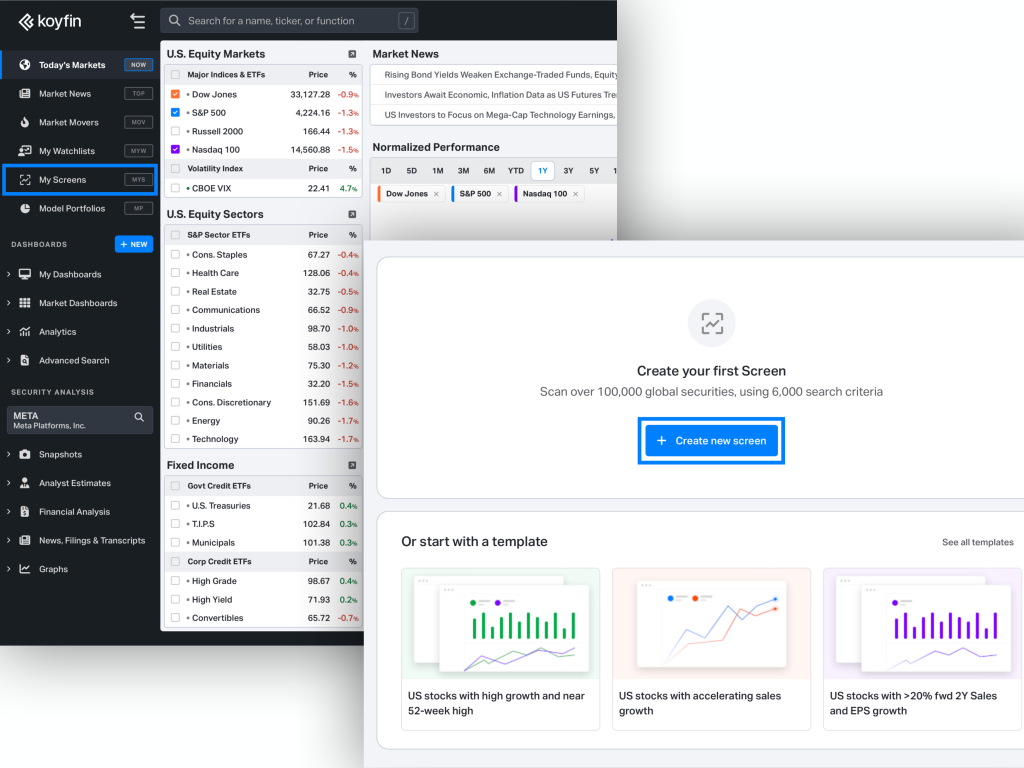
Step 3: Define your Investment Universe. Select a trading region, or multiple regions, and your desired countries. Add ‘Advisor’ as a universe criterion and select “The Vanguard Group”. If you prefer, you can also add “Is Levered” and “Is Active” and select “No” to remove levered and active ETFs.
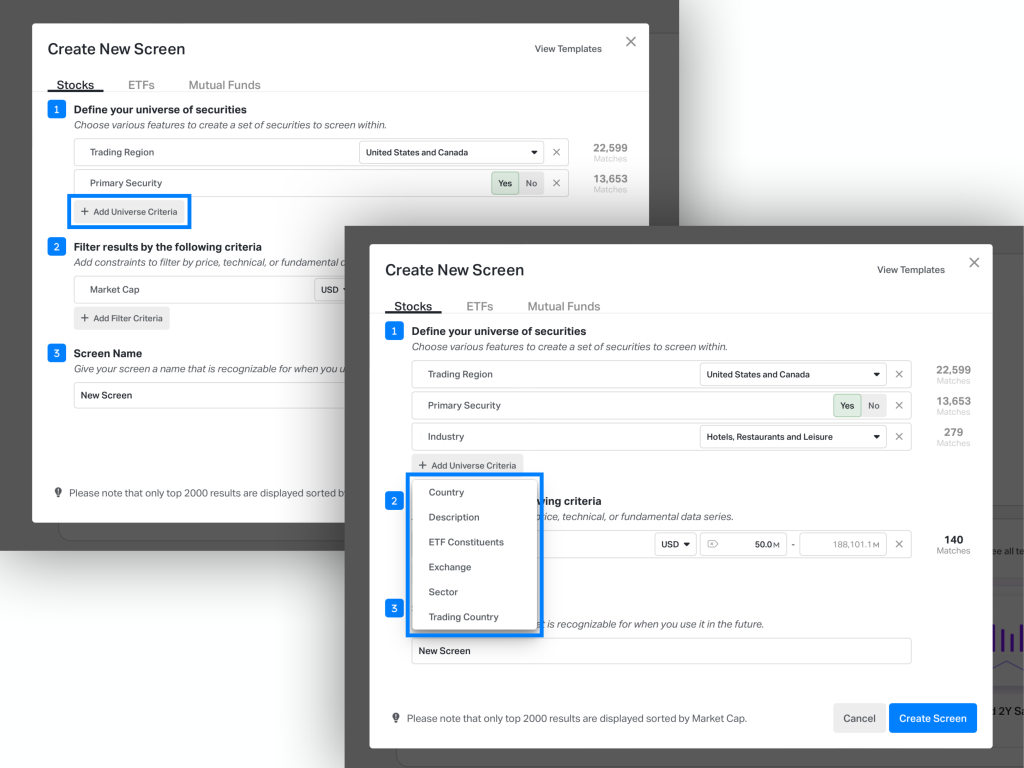
Step 4: Add Filter Criteria. We have thousands of data points you can add to a screener. For an ETF screen, you can specify specific AUM ranges, expense ratios, flows, custodians, and more. If you want to simply see all the ETFs available, leave the filter criteria blank.
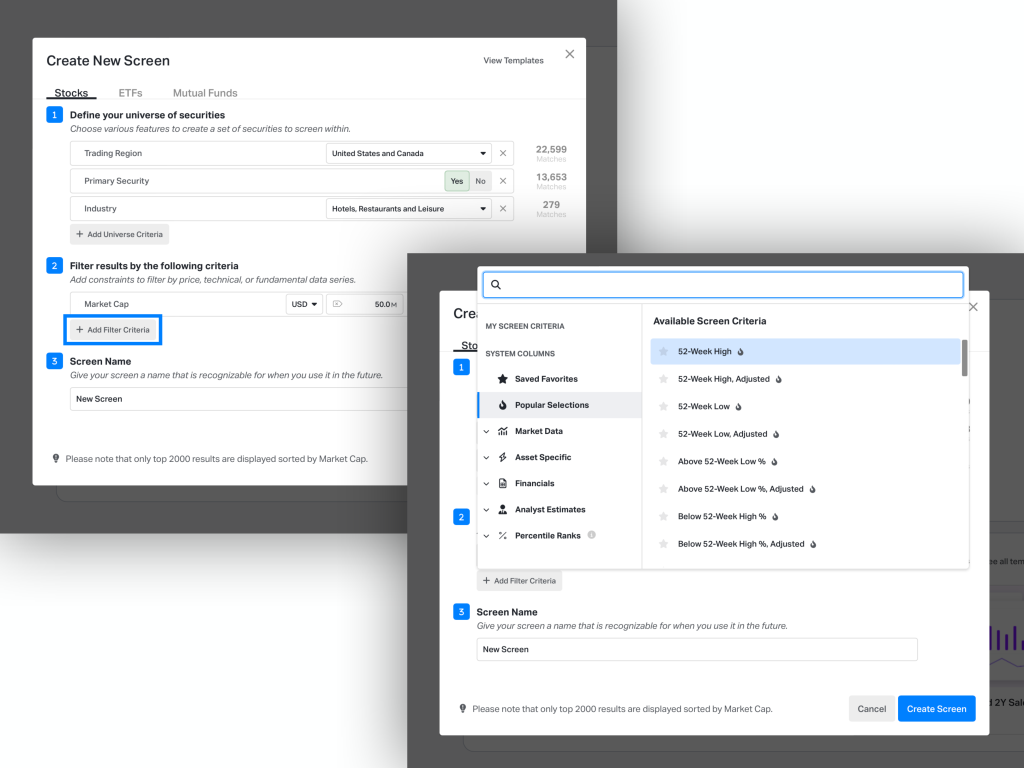
Step 5: Create Screen. When you are happy with your screener, hit save and apply. You can also save this screener output as a watchlist too, and add columns like expense ratio, aum, and more ETF-specific items.
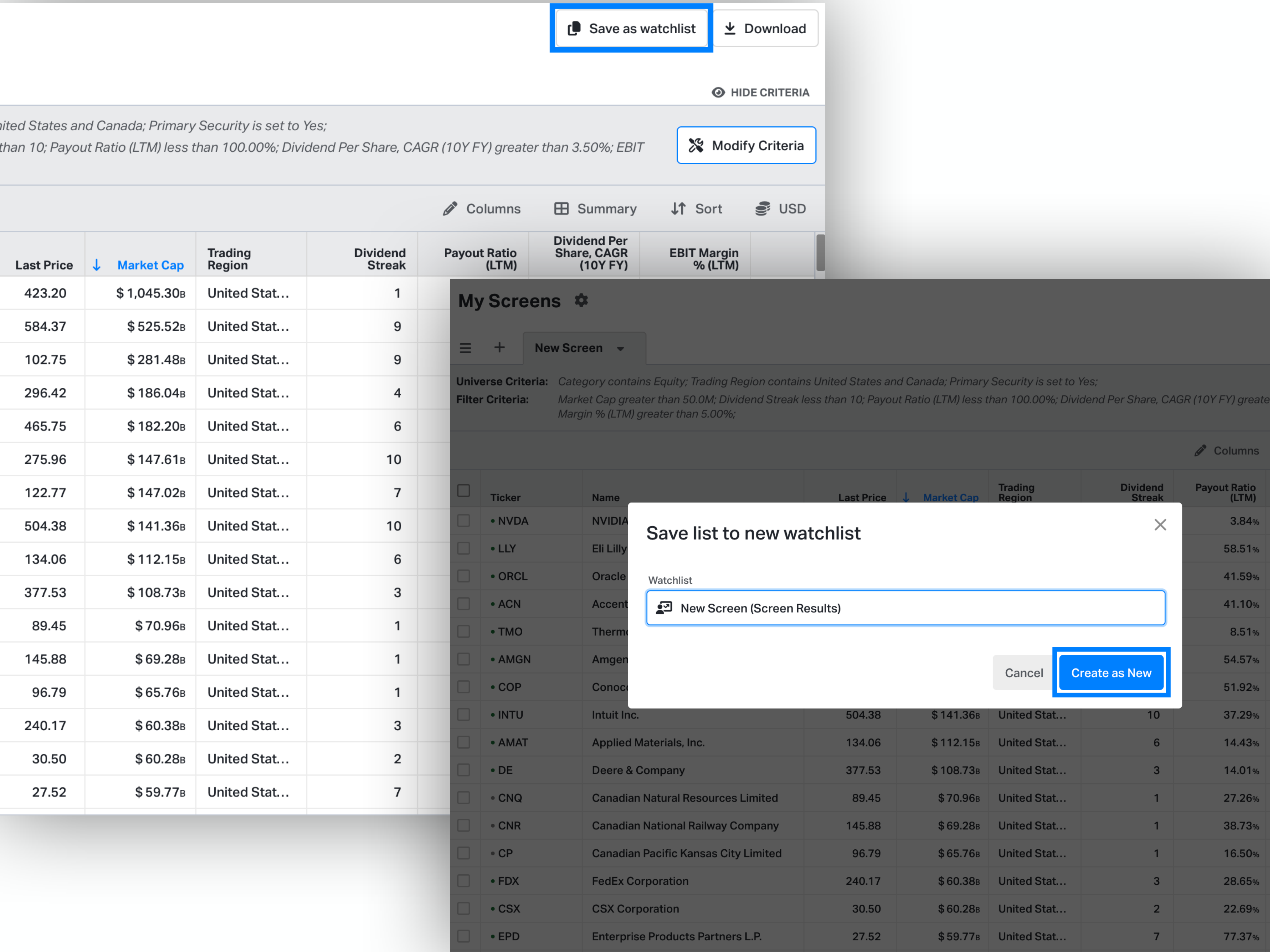
FAQ
-
What is Vanguard?
Vanguard is a US-based investment management company known for its low-cost mutual funds and exchange-traded funds (ETFs). It’s one of the largest asset managers globally, with trillions of dollars in assets under management (AUM). Vanguard is often associated with index investing, which aims to replicate the performance of specific market indices. The company operates on a unique at-cost basis, where the funds’ shareholders essentially own the company, allowing for lower expense ratios and a focus on long-term, value-driven investing.
-
What are Vanguard ETFs?
Vanguard ETFs are baskets of stocks or bonds that you can buy or sell on a stock exchange, similar to individual stocks. They aim to track the performance of a specific market index.
-
Why are Vanguard's expense ratios typically lower than many competitors?
Vanguard operates at-cost, meaning they aim to only cover their operating expenses and not make a profit from the expense ratios. This unique ownership structure and their large scale help keep costs low for investors.
-
Are there minimum investment requirements for ETFs?
Unlike mutual funds, ETFs don’t have minimum investment requirements. However, you generally buy them as whole shares, so you’ll need enough money to buy at least one share.
-
How does Vanguard select the stocks or bonds for each ETF?
Vanguard selects stocks or bonds based on the specific index the ETF is designed to track. For example, if an ETF tracks the S&P 500 index, it will hold the same companies as in that index.
-
Are there any international exposures in these ETFs?
Yes, Vanguard offers ETFs that invest in international stocks and bonds. The exposure depends on the specific ETF’s objective.
Editorial note
Our insights are derived solely from historical information and analyst predictions, employing an impartial approach. Please note that our articles do not serve as financial guidance.

